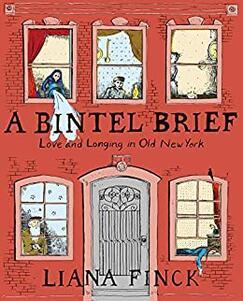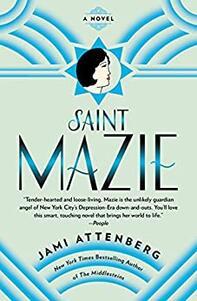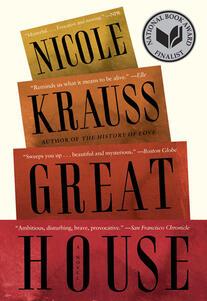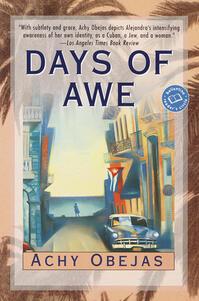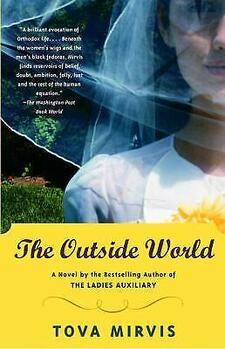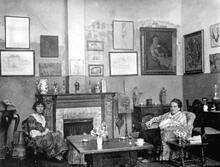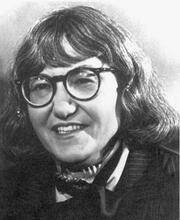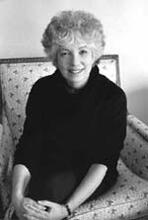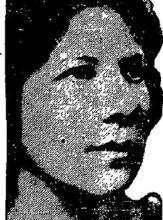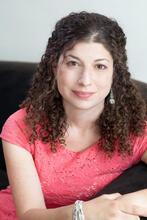Twenty-First Century Jewish Literature by Women in the US
Twenty-first-century Jewish women’s writing in the United States is still nascent, yet a number of key trends have emerged to suggest that this a powerful body of writing. While some Jewish American women writers are identifying and even defining the Zeitgeist by writing about modern modes of misogyny, others are looking to a range of Jewish histories rarely before explored in American literature. Among these are the Spanish Inquisition and its legacy of crypto-Jews; the mythologies that can be seen in the context of other cultures’ mythologies; the possibility of once-cast-off religious life being reclaimed; the stories of Jews from Muslim and Arab lands; and the impact of the Holocaust on grandchildren of survivors. Significantly, this writing often foregrounds the place of women in these histories.
Introduction
Early in her debut novel, In the Image (2002), Dara Horn tells of an impressive slide collection. This collection, chronicling the history of Jewish life around the world, is owned by an old man, an immigrant from Europe to America who has been marked by the horrors of the Holocaust. He wants to share the collection with a young American-born girl, pass on its significance. By the end of the novel, however, most of the slides have drowned in a near-fantastic deluge that evokes Noah’s Flood. Only a handful of images remain. But it doesn’t matter; the girl has learned enough from the man’s slides, and she has begun amassing her own collection of images.
In so telling of this lost-but-remembered set of Jewish images produced through the male gaze, and made anew in a young woman’s hands, Horn’s novel reads like a parable. It suggests that contemporary Jewish literature can be both in the image of the Jewish past—and not. Part of a wave of Jewish American women writers to rise to prominence at the end of the twentieth century and beginning of the twenty-first, Horn offers an array of images of Jewish life that commemorates the past, interrogates the present, and anticipates the future. In the Image, along with Helene Wecker’s The Golem and the Jinni (2013), Liana Finck’s A Bintel Brief (2014), and Jami Attenberg’s Saint Mazie (2015), all return us to the familiar literary stomping grounds of Lower East Side Manhattan at the turn of the twentieth century. The tenements of Anzia Yezierska and Miriam Karpilove, the Venice Motion Picture Theatre of Joseph Mitchell, the Hester Street of Abraham Cahan and Samuel Ornitz—the New York of words long ago made familiar to readers, Jewish and not—are revisited. But importantly, looking back is not merely an act of nostalgia.
The novels mine the tales of the past through the modern imagination and progressive values, fresh artistic forms, individual innovation, and, significantly, a pervasive feminist ethic. With an eye to the long history of multiculturalism and the beauty of cultural mythologies that transcend borders, Helene Wecker pairs the mythical Eastern European Jewish golem with the mythical Arab jinni and sets them amidst the swirling masses of New York’s newcomers. In so doing, she highlights the failure of early twentieth-century ethnic American literature to acknowledge the shared and overlapping experiences of disparate immigrants. And departing from hundreds of years of gendering golems male, Wecker’s golem, like Cynthia Ozick’s golem in The Puttermesser Papers (1997) and more recently, Alice Hoffman’s golem in The World That We Knew (2019), is female. The female golem is no less powerful, commanding.
Thanks to Liana Finck, the yellowed and crumbling letters that the Yiddish newspaper Der Forverts once published, letters filled with the yearning, the desire, the confusion, the desperation of New York’s greenhorns, are given new life with a modern genre—the graphic novel. Unable to read the Yiddish of the original letters, Finck turns her attention to the images accompanying the letters instead. She recreates for readers “A Gallery of Missing Husbands,” so we can see and remember all those men who abandoned their families in the New World: Chayim, 35; Alter, 42; Mendel, 38; Shmuel, 41; Fishke, 25; Moshe, 29; and more. She visually constructs for us, too, the compassion of Abraham Cahan, editor of Der Forverts and advice columnist for the “bintel brief,” drawing his head, with its hat floating above it, in the shape of a perfect heart. Finck’s A Bintel Brief is a story of a grandfather and granddaughter piecing together the meaning of the past (not unlike Horn’s old man offering his slide collection to the young American-born girl who creates her own vision). It includes, in English translation, some of the original letters published in the old advice column. But more dramatically, the visual element of the graphic novel insists readers re-think, re-see, re-feel the meanings of the letters because “some things simply can’t be put into words,” as the final panel of the novel reads (Finck np).
In these works, the storied places become newly significant (defamiliarized, refamiliarized), differently illuminated, and near-magical in their mythological import. “Mazie, Queen of the Bowery” becomes more than the handful of pages of Joseph Mitchell’s 1940 New Yorker article when Jami Attenberg gives readers the companion narratives of Mazie’s abusive father and victimized mother; her mentally ill older sister and joyriding younger sister; her affinity, as a Jewish girl, for Catholicism; and her apparent lack of romantic engagement. Attenberg adds to a powerful postmodern feminist tradition that began with Jean Rhys’s Wide Sargasso Sea (1966) and has continued through Jane Smiley’s A Thousand Acres (1991) and Alice Randall’s The Wind Done Gone (2001), among others. It is a tradition of retelling the stories of marginal women from their own points of view.
Reclaiming the Past
In the twenty-first century, what was lost to history is now reclaimed. In Horn’s In the Image, we discover lost history through the protagonist Leora’s boyfriend, Jason, a young, fiercely secular Jewish man in late twentieth-century America, who speaks with an elderly man in a nursing home and later tells Leora of their conversation.
The old man, senile and mistaking Jason for someone named Marcus, shares his tale of coming to America:
You had to cross two borders with forged papers just to get to Bremen, which was a town in Germany where your ship to England was docked, and then the ship took you to Liverpool, where you boarded another ship, this time to America…in steerage class at the bottom of the ship…you and all the other Jews were packed in by the hundreds, piled on top of each other like packages, and the ship kept rolling and everyone kept vomiting and there was no ventilation and the whole place smelled like shit and vomit for two weeks and you couldn’t even walk three steps without tripping over some screaming little child (Horn 52).
The memory, given in the second person, implicates its multiple recipients: the intended listener (Marcus), the actual listener (Jason), the listener’s listener (Leora). Ultimately, the readers of Horn’s novel are all the recipients of this second-person story, all tasked with a role in historical recovery: to become deep-sea divers.
Deep-sea divers? Yes, because, according to the lore of the novel, when the Jewish men of the early twentieth century, on their ships full of vomit and shit, arrived beneath the shadow of the Statue of Liberty, they threw their Phylacteriestefillin overboard. No need in America for the accoutrements of religious Judaism. Horn’s remembering of the cast-off tefillin mirrors Myra Goldberg’s remembering of the sheitels, or marital wigs, thrown overboard by early twentieth-century Jewish women in her 1992 short story “Hair.” In their act of returning to the narratives of assimilation of the early twentieth century, Horn and Goldberg allow readers to rethink the fates of Cahan’s eponymous heroes, Yekl and David Levinsky, or Mary Antin, who opened her 1912 autobiography with the declaration, “I was born, I have lived, and I have been made over” (Antin 1). In Bread Givers, Yezierska’s Sara Smolinsky rejected her father’s Old-World Orthodoxy with the declaration, “Nobody can stop me. I’m not from the old country. I’m American!” (Yezierska 138). Yet by the end of Bread Givers, Sara’s joy turns to guilt, and she begrudgingly abandons her hatred of her father and religious heritage. “Can a tree hate the roots from which it sprang?” she asks (286). These stories of tefillin-tossing and sheitel-shucking came tinged with nostalgia and regret. Yet the assimilation they traced also seemed inevitable.
Remembering Jewish Histories
A new body of literature suggests that nothing is inevitable. At the end of Horn’s novel, Leora becomes a deep-sea diver. This final scene of In the Image takes place on the night before Leora’s wedding (allowing Horn to gently forego the traditional marriage plot). In her dream, Leora discovers “a city made up entirely of things that the people in the world above it have forgotten, all that they have decided, deliberately or otherwise, to cast into the ocean.” It is not, she tells us, a “warehouse for nostalgia.” Instead, it “contains only things we have truly abandoned, created exclusively out of what we believe to be lost forever.” Entering the city on a road paved with cast-off tefillin, she finds dime novels and telegrams, letters that never reached their destinations, a directory listing herself married to her long-ago boyfriend, Jason, and the old man with his slide collection. Only, the collection is blank: “These are yours,” he tells her. “You can fill them with whatever you like” (Horn 270-280).
Lost histories, untold histories, unimagined histories – each could fill a slide or a dozen or many more. And it is not, of course, only Ellis Island, the Statue of Liberty, the tenements of the Lower East Side, the best-known, the super-storied sites of mass Jewish migration to America that Horn, among others, takes us back to or into or through at the beginning of this new millennium. Jewish American writers, particularly women, have been taking us into many other Jewish histories, myriad histories in the slideshow of the collective Jewish consciousness. In Eternal Life (2018), Horn reaches back to the time of the destruction of the second temple. Notably, not only Horn, but also Nicole Krauss in Great House (2010), Alice Hoffman in The Dovekeepers (2011), and British Jewish writer Naomi Alderman in Liars’ Gospel (2012), demonstrate for twenty-first-century readers how what happened amongst a group of Jews two thousand years ago, from the life of Jesus to the scattering of the Jews into the diaspora, continues to impact our lives. “What is a Jew without Jerusalem?” Krauss’s Great House asks, concluding, “Turn Jerusalem into an idea. Turn the Temple into a book” (Krauss 279). In the first century, after the burning of Jerusalem, as Krauss recounts, Yochanan Ben Zakkai built a school in Yavneh where scholars debated the meaning of the Torah. Their debates became the basis of the Talmud. “Jerusalem Displaced is what we mean when we say Yavneh,” wrote Ozick in one of her most famous pronouncements on Jewish literature, arguing “America shall, for a while, become Yavneh.”
Another historically significant legacy is recaptured in twenty-first-century Jewish American women’s writing: the legacy of the Spanish Inquisition. In Achy Obejas’s Days of Awe (2001), the family that escapes to the United States in the wake of the Cuban Revolution descends from the anusim—also known as conversos, or, pejoratively, marranos—who came to the new world with Christopher Columbus to avoid exposure and persecution. Corrine Joy Brown’s Hidden Star (2016) tells the story of a contemporary crypto-Jewish woman of New Mexico whose fate echoes an early nineteenth-century one. And perhaps the most ambitious of them all, Rachel Kadish’s The Weight of Ink (2017), winner of the National Jewish Book Award, takes readers on a long journey, full of mystery, from the Descendants of the Jews who lived in Spain and Portugal before the explusion of 1492; primarily Jews of N. Africa, Italy, the Middle East and the Balkans.Sephardic community of Amsterdam who escaped the Inquisition through twenty-first-century England. She presents as her heroine Esther Velasquez, a Portuguese Jewish woman who is a philosopher as great as, or perhaps even greater than, Baruch Spinoza. Kadish’s story is both unbelievable and, oddly, believable: perhaps like Virginia Woolf’s Judith Shakespeare, there could have been an Esther Velasquez, a great Jewish woman whose brilliance was lost to history because of her sex. In The Paris Review, Kadish wrote poignantly of her choice of heroines: “We’ve lost too many stories. Historical fiction, undertaken with integrity, is an act of repair. Lives have run through the sieve, but we can catch them in our hands.”
Other Histories, New Stories
Moreover, the challenge to “Ashkenormativity,” as the dominance of Eastern European descended culture has come to be called, does not end with this new literary legacy for Sephardim. The stories of Lit. "Eastern." Jew from Arab or Muslim country.Mizrahim–Jews from Muslim and Arab lands—have also come to the fore. In memoir, Lucette Lagnado tells the stories of her family by focusing on the life of her father in Egypt in The Man in the White Sharkskin Suit (2009), and of her mother and herself after coming to America in The Arrogant Years (2013). In fiction, Dalia Sofer’s beautiful novel The Septembers of Shiraz (2007)—later a film starring Salma Hayek—mixes the viewpoints of a Jewish man jailed in the aftermath of the Iranian Revolution with those of his wife and daughter home and afraid, and his son, far away in Brooklyn. Remarkably, in the very the cultures known for strict patriarchy, the authors often offer feminist revisions. In Henna House (2014), for instance, Nomi Eve constructs a feminist Jewish fantasy out of the history of early twentieth-century Yemen. The main character, Adela, worships the goddess Ashtoret/Asherah and partakes in henna ceremonies marked by songs about the matriarchs: “About our mother Miriam and her tambourine, about our mother Sarah’s laughter, about Esther’s courage, Deborah’s wisdom, Ruth’s loyalty, Judith’s daring, Eve’s beauty” (Eve 125). Adela also becomes a teacher to girls and women in a time and place where to be female was to be illiterate. The women of the novel struggle with a language system coded male, imagining how much more easily they could participate in what feminist theorist Hélène Cixous calls écriture feminine. “‘What I am saying is that they are not our letters…Our letters would show this—’,” explains Adela’s pupil. She gestures at the curve of a little girl’s cheek, “‘Or that—’ She pointed over to the acacia, where one of her companions was nursing a babe.” She goes on to ask Adela to draw letters that indicate the fullness of a nursing breast: “Now that is something I could read, a letter drawn from my life. And you know what? It would read me back. Tell my stories …Teach me our language’—she motioned toward her companion with the eagle nose, her sister with the babe at her breast—‘and then we can teach each other how to speak it’” (Eve 207-8). In this rarely explored pocket of Jewish history, Eve imagines a world of feminist sisterhood and revolution.
But “well-known” histories also need literary reckoning. Contemporary Holocaust fiction, particularly a growing subgenre called “third generation,” often written or narrated by grandchildren of Holocaust survivors, is one of the most heartfelt “acts of repair,” in Kadish’s words. The novels and collections of short stories in this category include such notable works as Krauss’s The History of Love (2005) and Great House (2010), Kadish’s In a Sealed Room (2006), Sara Houghteling’s Pictures at an Exhibition (2009), Julie Orringer’s The Invisible Bridge (2010) and The Flight Portfolio (2019), Erika Dreifus’s Quiet Americans (2011), Ayelet Waldman’s Love and Treasure (2014), and Georgia Hunter’s We Were the Lucky Ones (2017). This fiction is hardly monolithic, of course, and writers have increasingly been taking on a variety of approaches. Everything is Illuminated (2002), written by Jonathan Safran Foer, Krauss’s former husband, is one kind of model for this category of books; Krauss’s The History of Love offers a distinctly different one. While they share a playful approach, therein the comparison ends. If Foer’s novel is apparently crafted out of ignorance—he cannot know what truly happened, so he must invent—Krauss, both in History and later in Great House (2010), makes clear the research involved in her artful tales. So too Orringer, whose thick tome about the lives of Jews leading up to and during the war in Hungary (which, in fact, has received little literary attention to date) becomes a bridge between those who experienced the Holocaust directly and those who inherited its legacy and yet still must, in their literature, reinvent it. In these novels, the yoke of inheritance indeed feels heavy. No longer can we have a Sara Smolinsky rejecting her heritage by declaring, “Nobody can stop me…I’m American!” Instead, when The History of Love’s Alma states, “I’M AMERICAN!” her mother is nonplussed—“Suit yourself”—while her brother, a fellow member of the “third generation” cohort, knows better, sets her straight. “No, you’re not,” he says. “You’re Jewish” (Krauss 97).
This great certainty in some kind of essential Jewish identity is not a driving force in the new wave of Russian-American Jewish literature. As in Obejas’s Cuba, the former Soviet Union is a place where stories and genes collide, where Jewishness points as much to history as a historical void. In Lara Vapnyar’s debut short story collection There are Jews in My House (2003), Katya “didn’t know what ‘a Jewess’ meant, or ‘a Jew,’ or even ‘Jewish.’ She’d never heard these words from anybody in her family or on television, but somehow she immediately understood that she didn’t want to be it” (Vapnyar 84). In Anya Ulinich’s Petropolis (2007), Sasha believes her parents gave her the Jewish last name Goldberg “to take the focus off black-skinned. There were, after all, degrees of undesirable nationalities” (Ulinich 31). This near-irrelevance of Judaism lasts until Sasha arrives as a mail-order bride in America—at which point the novel offers a satirical vision of well-meaning liberal American Jews who exult in their own beneficence as they save their Jewish brethren from Soviet persecution through lavish parties and ignorant patronage. Sasha’s perspective feels fresh, but Ulinich is not alone in turning a critical eye on the experiences and reception of post-communist immigrants in America. Ellen Litman’s The Last Chicken in America (2008), Nadia Kalman’s The Cosmopolitans (2010), Molly Antopol’s The UnAmericans (2014), Sana Krasikov’s stories One More Year (2008) and novel The Patriots (2018), and Vapnyar’s novel Still Here (2017) have all contributed to this recent body of fiction.
In many of these books, Jewish histories intersect and overlap. In The Septembers of Shiraz, Zalman, a Hasidic landlord, tells Parviz, his Iranian Jewish tenant, that just as Parviz’s father is wrongly imprisoned in post-revolutionary Iran, so too was Zalman’s in Leningrad in the early days of the Soviet Union. “It’s different,” Zalman says, “But in the end, it’s the same” (Sofer 83). Parviz admires the pious life, the life of family and community that Zalman leads, and for a time, he thinks he ought to lead such a life as well.
Return to Faith
Parviz does not, ultimately, adopt the garb of the Hasid, but In the Image’s Jason does. Over the course of Horn’s novel, Jason transforms from a secular young man without spirituality, without meaning in his life, to a Hasid, a ba’al teshuva, one who returns to the faith; this is how he becomes a deep-sea diver.
And this is how so many characters in the stories of twenty-first-century Jewish American women writers become deep-sea divers. Already from the late 1970s and 1980s, Jewish American literature saw the reclaiming of sheitels and tefillin, the language of liturgy, the belief that there is a need for the accoutrements and rituals of religious Judaism, not only in the Old World and the old time. In these early iterations, however, American women writers like Anne Roiphe, Naomi Ragen, and Tova Reich as often as not set their seminaries and cloistered communities in Israel; Ozick makes her American shtetl in “Bloodshed” remote and only half-built. America was not yet the “promised land” for their fictional religious Jews. An outlier, popular writer Faye Kellerman located the Orthodox heroine of her Decker/Lazarus crime fiction series (1986- ) in Los Angeles. Yet Kellerman’s Rina Lazarus, conspicuously, struggles to find a place where she belongs: the series begins with Rina, oddly, living in a yeshiva for men, as a husbandless woman; later, Rina marries Peter Decker and moves to his ranch, far from any Jewish life and community; and only in the thirteenth novel of the series does Kellerman move Rina and Peter into a flourishing Jewish community. In The Forgotten, published in 2001, readers discover an open yet “self-contained” Orthodox community centered around a shul, complete with kosher pizza joints, butchers, bakeries, and everything else an observantly religious family would need.
By the turn of the twenty-first century, literature was rapidly becoming rich with this new model of America: one that accommodates large communities of Orthodox Jews who distinguish themselves religiously and culturally from their fellow citizens. Pearl Abraham’s fictional Hasidic family in The Romance Reader (1995) is isolated in upstate New York. In Allegra Goodman’s 1998 novel Kaaterskill Falls, however, strictly Orthodox families are depicted both in their upstate New York summer bungalow colonies and their New York City homes the rest of the year. Goodman’s fictional Kirshners they live in Washington Heights, although Goodman explains that “No Kirshners climb up to Fort Tryon Park or go to the museum there, the Cloisters, with its icons and crucifixes, its medieval sculpture carved in cool gray stone. The Kirshners never think of the Cloisters. They are absorbed in their own religion” (Goodman 4). In Tova Mirvis’s The Ladies Auxiliary (2001), the collective “we” of East Memphis (“the Jerusalem of the South”) narrating the novel echoes the Kirshners, saying “we exist as a city within a city, with fortress walls surrounding us on all sides” (10). On the contrary, in Mirvis’s subsequent novel, The Outside World (2004), Brooklyn’s pervasive Judaica appears to extend in all directions: the streets are “lined with kosher bakeries and hat shops, wine stores and bookstores, kosher butcher shops and pizza places. They had kosher submarine sandwiches and kosher cappuccino. Stores sold leather yarmulkes painted like basketballs and baseball sweatshirts with YANKEES written in Hebrew. They had Hebrew computer software and Palm Pilots with the siddur downloaded onto them” (Mirvis 113). Here, we learn, “the minority felt like a majority” (Mirvis 110). In this novel and many others, it seems that Jews have not only found a place in America; America itself has been “made over in their image” (Mirvis 97).
Rejection of Faith
Perhaps it is unsurprising that the spotlight on Orthodox women’s lives and immersive religious communities featured in twenty-first-century Jewish American fiction would inspire stories of resistance to those very communities, to the roles that women have in them. In 2014, the Jewish press proclaimed “ex-frum” or “off-the-derech” (off the path of Orthodoxy) memoirs to be “New York publishing’s hottest new trend.” Although writer Shalom Auslander led the way in the United States with A Foreskin’s Lament (2007), the genre quickly became dominated by women and often classed among other women’s “misery lit” about leaving fundamentalist faiths. When Deborah Feldman published her landmark memoir of leaving her Satmar Hasidic community, Unorthodox: The Scandalous Rejection of My Hasidic Roots (2012), the book hit the New York Times bestseller list, was widely reviewed, and featured as an Oprah Magazine top pick. In 2019, Netflix developed Feldman’s memoir into an Emmy-winning television series. Soon after the publication of Unorthodox, Leah Vincent wrote Cut Me Loose: Sin and Salvation after My Ultra-Orthodox Girlhood (2014) about leaving her Yeshivish (non-Hasidic Haredi) community. Leah Lax described both entering and exiting Lubavitch Hasidism in Uncovered (2015), a book touted as the “first ex-Chasidic gay memoir.” Then Chaya Deitsch offered a positive spin in her memoir of leaving Lubavitch Hasidism, Here and There (2015), which exalted her continued relations with her family. Frieda Vizel published The New Leaf (2017), a graphic novel emerging from an illustrated blog she once ran. Tova Mirvis’s break from her husband and Modern Orthodoxy is recounted in The Book of Separation (2017), and in 2019, transgender activist Abby Chava Stein published the much-anticipated story of her exodus and evolution, Becoming Eve: My Journey from Ultra-Orthodox Rabbi to Transgender Woman. Alongside these memoirs, fiction covering similar ground has become popular. From wigs tossed in the sea to wigs reclaimed and then—to sea again!—the engagement with religious life (its rejection, acceptance, and reinterpretation) are at the heart of many contemporary Jewish women’s narratives.
The Prominence of Contemporary Jewish American Women Writers
Ultimately the sheer range and importance of issues explored by Jewish women writers of the twenty-first century allow them to be front and center in American literary and popular culture. One need look no further than the hit television show Younger (2015- ), created by Darren Star of Sex and the City fame, to see the cultural currency these writers hold. Focusing on the contemporary New York publishing world, with insights into the reading habits and desires of “millennials” who are, as Pew surveys have shown, reading significantly more than older generations, the series includes a good number of real and fictional Jewish American women writers. The pilot episode features a social media campaign (“Show us Your Oates”) surrounding Joyce Carol Oates, who, upon receiving the Jerusalem Prize in 2019, explained in interviews that her family’s denial of its Jewish ancestry both haunted and drove her prolific and widely read fiction. Popular romance writer Jennifer Weiner—whose books insist on realistic heroines who face the world with their “zaftig” (Yiddish for “full”) figures (and whose 2001 bestseller Good in Bed shifts the Jewish heteronormative symbol of the chuppah [marriage canopy] onto a mother-daughter relationship)—makes a cameo appearance in the second season. Erica Jong, Jewish trailblazer of women’s sexuality of the previous generation, appears in the third season. A nametag for Rachel Kushner, whose The Mars Room (2018) is a devastating portrait of poor women’s lives in contemporary America, is prominently displayed at a book launch on the show, along with those of Daphne Merkin (who won the Edward Lewis Wallant prize for her novel Enchantment) and Eve Ensler (author of The Vagina Monologues). New York Times bestselling author Meg Wolitzer is wooed by competing publishers in the sixth season.
The showcasing of these Jewish women writers is unsurprising. These women are not afraid to explore the myriad Jewish histories and traditions alongside, and often as a lens for, the pressing issues in America and the world today. This is why Horn’s A Guide for the Perplexed (2013) can use the story of the Cairo Genizah to problematize the real-time chronicling of the digital age. The Jewish past is not at the core of Taffy Brodessor-Akner’s Fleishman is In Trouble (2019), but Jewish culture is everywhere in the novel. Fleishman arrived to rave reviews that called it everything from “the Tinder-age Portnoy” and a “feminist jeremiad,” to a “universal….an honest, powerful, human story with no apologies.” Like Adelle Waldman’s The Love Affairs of Nathaniel P. (2013) before it, this feminist novel manages to give us very particular, and very particularly Jewish characters: Brodessor-Akner and Waldman’s characters spend their year abroad at Hebrew University; they have siblings who are ba’alei teshuva; they go on shabbatonim. At the same time, these novels put a finger, with inimitable precision, directly on the early twenty-first-century zeitgeist.
Selected Twenty-first-century Primary Works by Jewish Women in the US:
Antopol, Molly. The UnAmericans. New York: W.W. Norton, 2014.
Attenberg, Jami. Saint Mazie. New York; Grand Central Publishing, 2015.
Brodessor-Akner, Taffy. Fleishman is In Trouble. New York: Random House, 2019.
Brown, Corrine Joy. Hidden Star. Victoria, Canada: FriesenPress, 2016.
Deitsch, Chaya. Here and There. New York: Schocken, 2015.
Dreifus, Erika. Quiet Americans. Last Light Studio, 2011.
Feldman, Deborah. Unorthodox: The Scandalous Rejection of My Hasidic Roots. New York: Simon & Schuster, 2012.
Finck, Liana. A Bintel Brief. New York: Ecco, 2014.
Hoffman, Alice. The Dovekeepers. New York: Scribner, 2011.
Hoffman, Alice. The World That We Knew. New York: Simon & Schuster, 2019.
Horn, Dara. A Guide for the Perplexed. New York: W.W. Norton, 2013.
Horn, Dara. In the Image. New York: W.W. Norton, 2002.
Houghteling, Sara. Pictures at an Exhibition. New York: Knopf, 2009.
Hunter, Georgia. We Were the Lucky Ones. New York: Viking, 2017.
Kadish, Rachel. In a Sealed Room. Mahopac, NY: Putnam, 2006.
Kadish, Rachel. The Weight of Ink. Boston: Houghton Mifflin Harcourt, 2017.
Kalman, Nadia. The Cosmopolitans. Livingston, AL: Livingston Press, 2010.
Kellerman, Faye. The Forgotten. New York: William Morrow, 2001.
Krasikov, Sana. One More Year. New York: Random House, 2008.
Krasikov, Sana. The Patriots. New York: Spiegl & Grau, 2018.
Krauss, Nicole. Great House. New York: W.W. Norton, 2010.
Krauss, Nicole. History of Love. New York: W.W. Norton, 2005.
Kushner, Rachel. The Mars Room. New York: Scribner, 2018.
Lagnado, Lucette. The Arrogant Years. New York: Ecco, 2013.
Lagnado, Lucette. The Man in the White Sharkskin Suit. New York: Ecco, 2009.
Lax, Leah. Uncovered. Phoenix, AZ: She Writes Press, 2015.
Litman, Ellen. The Last Chicken in America. New York: Norton, 2008.
Mirvis, Tova. The Book of Separation. Boston: Houghton Mifflin Harcourt, 2017.
Mirvis, Tova. The Ladies Auxiliary. New York: Norton, 2001.
Mirvis, Tova. The Outside World. New York: Knopf, 2004.
Obejas, Achy. Days of Awe. New York: Ballantine Books, 2001.
Orringer, Julie. The Flight Portfolio. New York: Knopf, 2019.
Orringer, Julie. The Invisible Bridge. New York: Random House, 2010.
Sofer, Dalia. The Septembers of Shiraz. New York: Ecco/HarperCollins, 2007.
Stein, Abby Chaya. Becoming Eve: My Journey from Ultra-Orthodox Rabbi to Transgender Woman. New York: Basic Books, 2019.
Ulinich, Anya. Petropolis. New York: Viking, 2007.
Vapnyar, Lara. There are Jews in my House. New York: Pantheon, 2003.
Vapnyar, Lara. Still Here. New York: Random/Hogarth, 2017.
Vincent, Leah. Cut Me Loose: Sin and Salvation after My Ultra-Orthodox Girlhood. New York: Nan A. Talese, 2014.
Vizel, Frieda. The New Leaf. Lulu.com, 2017.
Waldman, Adelle. The Love Affairs of Nathaniel P. New York: Henry Holt, 2013.
Waldman, Ayelet. Love and Treasure. New York: Knopf, 2014.
Wecker, Helene. The Golem and the Jinni. New York: Harper, 2013.
Weiner, Jennifer. Good in Bed. New York: Washington Square Press, 2001.
Brauner, David. “History on a Personal Note: Postwar American Jewish Short Stories.” In The Edinburgh Companion to Modern Jewish Fiction, edited by David Brauner and Axel Stahler. Edinburgh: Edinburgh University Press, 2015.
Glinter, Ezra. “Ex-Hasidic Writers Go off the Path and onto the Page.” Jewish Daily Forward, May 30, 2014.
Harris, Rachel S. “From Feminist to Housewife and Back Again: Orthodoxy and Modernity in American Jewish Women’s Writing.” In The Edinburgh Companion to Modern Jewish Fiction, edited by David Brauner and Axel Stahler. Edinburgh: Edinburgh University Press, 2015.
Horowitz, Sara R. “Mediating Judaism: Mind, Body, Spirit, and Contemporary North American Jewish Fiction.” AJS Review 30, no. 2 (November 2006): 231-253.
Lang, Jessica. “Gender and Feminism in Contemporary Jewish American Writing.” In The New Jewish American Literary Studies, edited by Victoria Aarons. Cambridge: Cambridge University Press, 2019.
Lewin, Judith. “‘Diving into the Wreck’: Binding Oneself to Judaism in Contemporary Jewish Women’s Fiction.” Shofar 26, no. 3 (Spring 2008): 48-67.
Meyers, Helene. Identity Papers: Contemporary Narratives of American Jewishness. Albany: SUNY Press, 2011.
Oksman, Tahneer. “How Come Boys Get to Keep Their Noses?”: Women and Jewish American Identity in Contemporary Graphic Memoirs. New York: Columbia University Press, 2016.
Pinsker, Sanford. “Jewish-American Fiction in the 21st century.” My Jewish Learning (https://www.myjewishlearning.com/article/jewish-american-fiction-in-the…).
Ross, Tova. “How Ex-Frum Memoirs Became New York Publishing’s Hottest New Trend.” Tablet Magazine, January 7, 2014.
Roth, Laurence. Inspecting Jews: American Jewish Detective Stories. New Brunswick: Rutgers University Press, 2004.
Rubel, Nora. Doubting the Devout: The Ultra-Orthodox in the Jewish American Imagination. New York: Columbia University Press, 2009.
Skinazi, Karen E. H. “Are Head Coverings the New Black? Sheitels and the Religious-Secular Culture Wars in Twenty-First-Century America and its Literature.” Open Library of Humanities 3, no. 2 (November 2017): 1-27.
Skinazi, Karen E. H. Women of Valor: Orthodox Jewish Troll Fighters, Crime Writers, and Rock Stars in Contemporary Literature and Culture. New Brunswick, NJ: Rutgers University Press, 2018.
Sollors, Werner, Beyond Ethnicity: Consent and Descent in American Culture. Oxford: Oxford University Press, 1986.
Wirth-Nesher, Hanna, ed. The Cambridge History of Jewish American Literature.
Cambridge: Cambridge University Press, 2016.
Wisse, Ruth, The Modern Jewish Canon: A Journey through Language and Culture. Chicago: University of Chicago Press, 2000).




